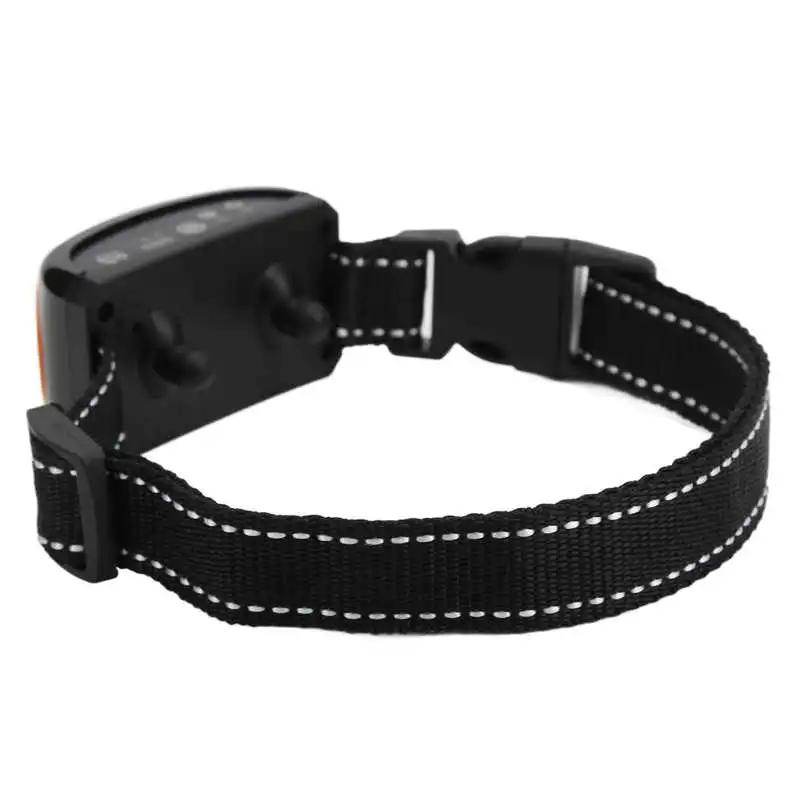Introduction
E-collar training, also known as remote training or electronic collar training, has gained popularity among dog owners and trainers. This method uses a collar that delivers a mild electric stimulus to the dog. The goal is to reinforce commands and correct unwanted behaviors. While some people are skeptical about this approach, many trainers advocate for its effectiveness when used properly. In this article, we’ll explore the fundamentals of e-collar dog training, its benefits, potential drawbacks, and best practices for implementation.

What is E-Collar Training?
The Basics of E-Collars
An e-collar consists of a strap that fits around the dog’s neck and a small device that delivers a signal. This signal can be a vibration, tone, or a mild electric stimulus. Many collars have adjustable settings, allowing you to choose the intensity level based on your dog’s temperament and response. For some, just the sound or vibration is enough to get their attention. Others may require a higher level of stimulation to understand the command or correction.
The primary purpose of an e-collar is to provide a way for the owner to communicate with the dog at a distance. This is especially useful in training scenarios where the dog needs to respond to commands while off-leash. Many trainers find that e-collars can help dogs learn commands more quickly. They can also assist in improving reliability, meaning the dog is more likely to obey commands even in distracting environments.
How Does E-Collar Training Work?
E-collar training works on the principle of operant conditioning. This involves modifying behavior through rewards or consequences. When a dog performs a desired behavior, it receives a reward, like praise or a treat. Conversely, if the dog engages in an undesired behavior, the collar delivers a correction signal. The idea is to create a clear association between the command and the expected behavior.
For example, if you call your dog and it ignores you, a slight correction from the collar can grab its attention. Once the dog responds correctly, you can immediately reward it. This immediate feedback helps the dog understand what you want. Over time, the dog learns to associate the command with positive outcomes rather than fear or punishment.
Benefits of E-Collar Training
Enhanced Communication
One of the most significant advantages of e-collar training is its ability to enhance communication between the dog and the owner. Traditional training methods often rely on verbal commands and physical cues. However, these can be less effective in noisy or distracting environments. With an e-collar, you can deliver signals from a distance, ensuring your dog hears your commands despite distractions.
This enhanced communication can be particularly beneficial during off-leash training sessions. If your dog is running around and not paying attention, a gentle reminder can refocus its attention back on you. The ability to communicate clearly from a distance makes training more effective and enjoyable for both the dog and the owner.
Improved Training Reliability
E-collar training can significantly improve a dog’s reliability in various situations. Many owners struggle with getting their dogs to obey commands in distracting environments, such as parks or around other animals. E-collars help address this challenge by providing consistent corrections when the dog fails to respond to verbal commands.
With regular use, dogs often become more responsive to commands. They learn to pay closer attention to their owners, even in bustling environments filled with distractions. This improved reliability can lead to safer off-leash experiences. Dogs that previously ignored commands can learn to return promptly when called, reducing the risk of accidents or lost dogs.
Versatility in Training Applications
E-collars are versatile tools that can be used for various training purposes. Whether you want to teach basic obedience, correct specific behaviors, or improve recall, e-collars can adapt to different training needs. For instance, they can assist with teaching commands like “sit,” “stay,” and “come.” Additionally, they can help address common behavioral issues, such as jumping, barking, or digging.
This versatility makes e-collars suitable for a wide range of dog breeds and temperaments. Trainers can modify their approach based on the individual dog’s needs. Some dogs may respond better to a low-level correction, while others may need a firmer reminder. The ability to customize training sessions ensures that each dog receives the appropriate level of guidance.
Potential Drawbacks of E-Collar Training
Misuse and Misunderstanding
While e-collar training offers several benefits, it also comes with potential drawbacks. One of the main concerns is the misuse or misunderstanding of the collar’s function. Some owners may use the e-collar as a punishment tool rather than a training aid. This can lead to fear-based reactions in the dog, resulting in anxiety and aggression.
To avoid misuse, it is essential for owners to educate themselves about proper e-collar training techniques. It’s crucial to understand that the collar should not be used as a primary form of discipline. Instead, it should complement positive reinforcement methods. Proper education and training are key to ensuring that e-collar training is effective and humane.
Risk of Dependence on the Collar
Another concern is the potential for dogs to become dependent on the collar for compliance. If a dog learns to only respond when the collar is present, it may struggle to obey commands without it. This dependence can undermine the training process and limit the dog’s ability to learn independently.
To counteract this, trainers recommend gradually reducing the use of the collar over time. Once the dog understands the commands and demonstrates reliable responses, owners can start fading out the corrections. This process encourages the dog to generalize the learned behaviors, making them applicable even without the collar.

Cost and Accessibility
E-collars can also represent a financial investment. Quality collars can range from affordable options to more expensive models packed with features. This cost might deter some owners from exploring e-collar training. Additionally, not all trainers are familiar with using e-collars effectively, leading to limited accessibility for those seeking guidance.
However, it’s essential to view an e-collar as an investment in training rather than just a purchase. For many owners, the long-term benefits of having a well-trained dog outweigh the initial cost. Seeking out trainers who specialize in e-collar training can also help connect owners with the necessary resources and knowledge.
Best Practices for E-Collar Training
Start with Basic Commands
When beginning e-collar training, it’s important to start with basic commands. Teaching foundational commands like “sit,” “stay,” and “come” lays the groundwork for more advanced training. Begin in a quiet environment free from distractions. This will help your dog focus on learning the new commands.
Once your dog shows consistent understanding of the basic commands, gradually introduce the e-collar. Start with the lowest stimulation setting. Use the collar only as a gentle reminder, paired with verbal commands. The goal is to create a positive association with the collar, reinforcing that it means “pay attention.”
Gradual Introduction of the Collar
Introducing the e-collar should be a gradual process. Before using the collar during training, allow your dog to wear it for short periods in a safe space. This will help your dog get used to the sensation without associating it with corrections or stress. Monitor your dog’s behavior to ensure it remains comfortable with the collar.
After your dog becomes accustomed to wearing the collar, begin using it during training sessions. Keep your initial training sessions short and focused. As your dog demonstrates progress, you can increase the duration and complexity of the training. Always prioritize positive reinforcement alongside the e-collar to create a balanced training experience.
Consistency is Key
Consistency is crucial in any dog training program, and e-collar training is no exception. Use the same commands consistently to avoid confusing your dog. Ensure that everyone in your household uses the same commands and training techniques. This uniformity will help your dog learn more effectively.
In addition to consistency in commands, maintain a routine in training sessions. Regular practice helps reinforce learned behaviors. Schedule short training sessions several times a week to keep your dog engaged and responsive. Over time, your dog will develop a strong understanding of the commands and expected behaviors.
Addressing Common Concerns
Safety Concerns
Many dog owners worry about the safety of e-collars. It’s important to note that when used correctly, e-collars are safe for dogs. The stimulation levels are adjustable, allowing you to choose the appropriate level for your dog’s sensitivity. Most dogs respond well to low-level stimulation, which feels similar to a light tap.
Always prioritize your dog’s comfort. Monitor your dog’s reaction to the collar during training. If your dog shows signs of distress or fear, it may indicate that the stimulation level is too high. Adjust accordingly and focus on creating a positive training experience. If needed, consult with a professional trainer to ensure proper training techniques.
Ethical Considerations
The ethics of e-collar training are often debated within the dog training community. Critics argue that it can induce fear and anxiety in dogs. However, proponents assert that when used responsibly, e-collars can enhance communication and improve training outcomes. To ensure ethical use, it’s vital to prioritize positive reinforcement alongside corrections.
If training methods cause fear or anxiety, they may be ineffective in the long term. Strive to create an environment where your dog feels safe and confident. Focus on building trust through positive interactions, rewards, and encouragement. This approach lays the foundation for successful training while minimizing potential ethical concerns.
Training Resources
Getting started with e-collar training can feel overwhelming. Thankfully, numerous resources are available to help dog owners navigate the process. Books, online courses, and instructional videos created by experienced trainers provide valuable insights. These resources can help clarify training techniques, ensuring you’re using the collar effectively and humanely.
Consider reaching out to local dog training clubs or organizations. Many offer workshops or classes focused on e-collar training. Engaging with a community of dog owners can provide support and motivation as you embark on your training journey. Connecting with experienced trainers can also offer personalized guidance tailored to your dog’s specific needs.

Conclusion: Making the Most of E-Collar Training
E-collar dog training can be an effective and valuable tool when used correctly. It enhances communication between the dog and owner while improving training reliability. However, responsible use is paramount to ensure a positive training experience.
Start with basic commands, gradually introducing the e-collar while maintaining consistency. Prioritize your dog’s comfort and well-being throughout the training process. By following best practices and addressing common concerns, you can create a successful training program that fosters a strong bond between you and your dog.
Ultimately, e-collar training is not just about corrections; it’s about building trust, understanding, and communication. With patience, dedication, and proper guidance, you can unlock your dog’s full potential and enjoy a fulfilling relationship with your furry companion.
